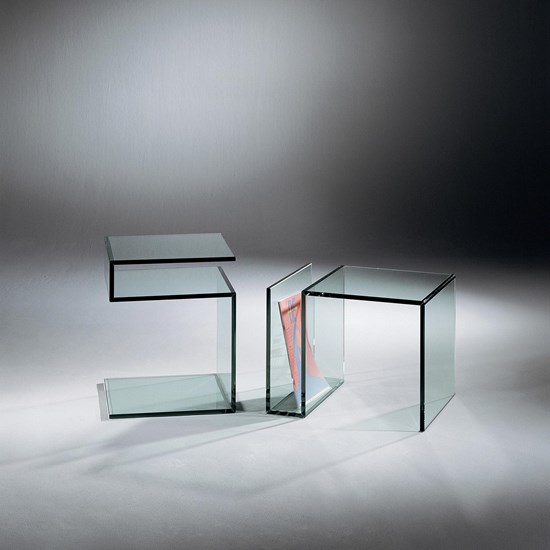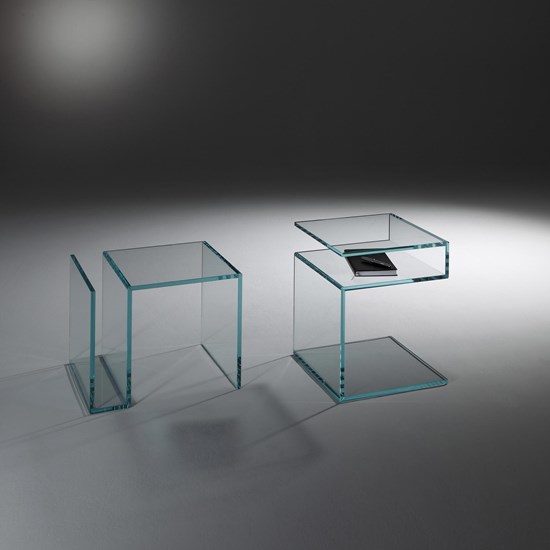-
Free Delivery in DE, AT & CH
-
Made in Germany
-
Individual Customisation Available
FLOATGLASS
The typical green edge having origin in the iron oxide contained in the glass mixture became known as the trademark of FLOATGLASS. The color effects are ranging from light green to almost black. In addition to the lighting conditions and the angle of view, the strength and above all the expanse of the glass element are essential for the edge color`s intensity. The larger the expanse, the more color pigments are viewed simultaneously leading to a higher intensity of the edge color.
The FLOATGLASS format usually appeals to customers preferring classical elegance.

Side table JANUS III FLOATGLAS
OPTIWHITE
A modern alternative is glass with a low level of iron oxide, so-called OPTIWHITE. The green edge gives way to a light turquoise gleaming in this version and the glass plane is considerably lighter as well; it appears almost completely colorless. Especially the modern, puristic and design-oriented style established this glass version quickly, although it is more expensive than classical FLOATGLASS due to the special production process.
For the format OPTIWHITE – colloquially called clear glass – applies equally: The appearance of edge color depends critically on the size of the glasses expanse. The smaller (and most often thinner) tabletop of a side table appears considerably lighter and less green than the larger (and most often thicker) glass plate of a coffee or dining table. In comparison to FLOATGLASS, OPTIWHITE is always much less green, but never without color. The format OPTIWHITE usually especially appeals to customers preferring modern, puristic design.
We recommend to base your decision, which glass version you prefer, on corresponding exhibits in your furniture store, as small glass samples (in both versions) always appear much lighter.
As an example for FLOATGLASS AND OPTIWHITE you see our model JANUS III.

Side table JANUS III OPTIWHITE